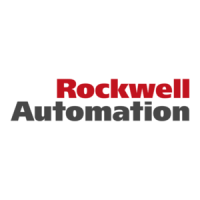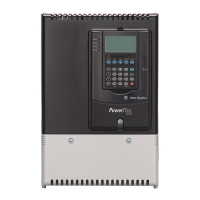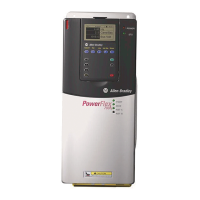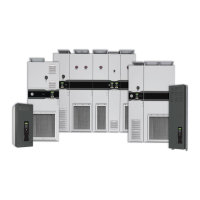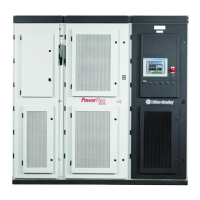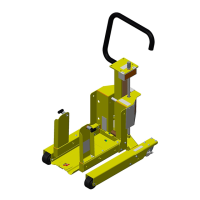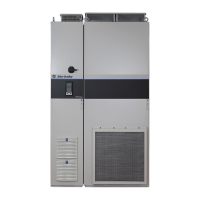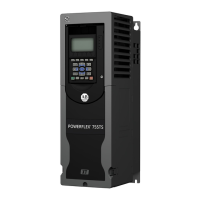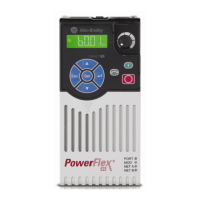
Do you have a question about the Rockwell Automation Allen-Bradley PowerFlex 520 Series and is the answer not in the manual?
| Input Voltage | 200-240V AC |
|---|---|
| Output Voltage | 0 to Input Voltage |
| Power Range | 0.4 kW to 22 kW (0.5 HP to 30 HP) |
| Control Method | Sensorless Vector Control |
| Communication Options | EtherNet/IP |
| Enclosure Type | IP20 |
| Protection Features | Overcurrent, Overvoltage, Undervoltage, Ground Fault, Short Circuit |
| Humidity | 5% to 95% (non-condensing) |
| Dimensions | Varies by frame size. See documentation for specific dimensions. |
| Weight | Varies by frame size. See documentation for specific weights. |
Explains the purpose and content of the manual.
Guides users on obtaining necessary software, files, and related documentation.
Covers manual conventions, drive frame sizes, and essential safety precautions.
Details the breakdown and meaning of the catalog numbers for drives.
Covers drive mounting, clearances, ambient conditions, storage, and protection from debris.
Details AC supply considerations, input power conditioning, and grounding requirements.
Information on fuses, circuit breakers, and various wiring types including motor and control wiring.
Explains I/O wiring, terminal blocks, start/stop controls, and signal types.
Explains how to select start sources and speed references for drive operation.
Outlines compliance with European directives like Low Voltage, EMC, Machinery, and ATEX.
Provides a task list and essential precautions before starting the drive.
Explains the drive's display, control keys, and parameter navigation.
Covers programming tools, language support, and startup wizards.
Introduces parameter types, groups, and cross-referencing.
Details parameters for displaying basic drive operating conditions and status.
Covers parameters for digital/analog I/O, relay outputs, and network settings.
Explains parameters for logic functions, advanced display, and motor control tuning.
Describes pre-defined and custom parameter groups for application setup.
Explains drive status indicators, fault types, and how to clear faults.
Lists and describes various drive faults with their causes and recommended corrective actions.
Provides troubleshooting guidance for common drive issues like motor not starting or responding.
Lists the various certifications and standards the drive complies with.
Details operating and storage conditions, including altitude, temperature, humidity, shock, and vibration.
Provides electrical and protection specifications for the drive.
Lists available drive ratings and corresponding catalog numbers.
Details adapter plates for mounting and EMC line filters.
Lists replacement control/power modules, fans, EMC cores, and jumper kits.
Details communication adapters, cables, and terminal blocks.
Provides physical dimensions for drives, fan kits, and adapter plates.
Step-by-step instructions for installing and removing communication adapters.
Covers RS485 network wiring practices and parameter configuration for DSI network.
Details the Modbus function codes supported by the Drive Serial Interface.
Explains how to read logic status, error codes, and operational values using Modbus.
Explains Velocity StepLogic with timed steps and basic logic functions.
Details the configuration and usage of timer and counter functions.
Discusses the use of pulse train input and optional encoder card for speed and position feedback.
Introduces the drive's position regulator, common guidelines, and operation.
Explains homing routines and suggests setup tools.
Discusses controlling positioning functions via communication networks.
Explains PID loop, Exclusive Control, and Trim Control configurations.
Details how to select PID reference sources and feedback inputs.
Covers PID deadband, preload, limits, gains, and adjustment guidelines.
Introduces the Safe-Torque-Off (STO) function and its purpose.
Covers certifications, EMC instructions, safety concepts, and critical considerations.
Step-by-step instructions for enabling, wiring, and verifying the STO function.
Provides diagrams for safe-torque-off connections with different stop actions.
Explains methods for configuring Ethernet IP addresses.
Details proper grounding procedures for EtherNet/IP networks.
Visual representations of speed controller gain adjustments for motor tuning.
Guides on how to adjust speed control parameters for optimal motor tuning.
Covers selecting control mode and entering motor nameplate data.
Details encoder feedback setup and drive stop modes.
Explains direction test, autotune, and manual configuration steps.
Provides additional setup for open-loop and closed-loop PM motors.
Describes the structure, control diagram, and basic operation of SynRM control.
Step-by-step guide for configuring SynRM control using the drive keypad.
Outlines procedures for adjusting parameters during no-load and load testing.
